#pmosoftware
Explore tagged Tumblr posts
Text
Master Multi-Project Tracking: Why Celoxis Reigns Supreme as Program Management Software in 2025
#programmanagemenetsoftware#programmanagement#pmosoftware#project manager software#best project management software
0 notes
Text
Top 5 Tips for PMP® Exam Preparation
In the ever-evolving landscape of professional certifications, the Project Management Professional (PMP®) certification stands out as one of the most esteemed and globally recognized qualifications. Earning your PMP® credential is a significant milestone in your career, opening up opportunities and boosting your credibility in the world of project management.

However, preparing for the PMP® exam can be a rigorous journey, requiring dedication and strategic planning. In this comprehensive guide, we will share the top five tips for PMP® exam preparation to help you not only pass the exam but excel in it.
1. Understand the PMBOK® Guide Inside Out
The Project Management Body of Knowledge (PMBOK® Guide) is the cornerstone of PMP® exam preparation. It's imperative to delve deep into this guide to understand the principles, concepts, and terminology that the exam is built upon. Don't just skim through it; immerse yourself in its contents. The PMBOK® Guide will be your trusty companion throughout your PMP® journey, serving as a reference for the project management best practices you'll need to master.
2. Develop a Well-Structured Study Plan
PMP® exam preparation is not something you can undertake haphazardly. It requires meticulous planning and organization. Create a study plan that outlines your goals, schedules, and the specific knowledge areas you need to focus on. Allocate dedicated time each day for your studies, and ensure that you stick to your plan consistently. This structured approach will help you cover all aspects of the exam and gradually build your knowledge and confidence.
3. Leverage Online Resources and PMP® Prep Courses
In the digital age, we're fortunate to have a wealth of online resources at our fingertips. Make the most of these resources by enrolling in PMP® preparation courses and utilizing reputable PMP® exam study materials. Many online platforms offer practice exams, flashcards, and interactive study aids that can significantly enhance your understanding of PMP® concepts. These resources provide a dynamic learning experience that complements your study plan.
4. Practice, Practice, Practice
One of the key secrets to PMP® success is consistent practice. The PMP® exam is not just a test of theoretical knowledge but also a measure of your practical project management skills. Regularly solving sample questions and taking simulated exams will prepare you for the format and difficulty level of the real exam. It's advisable to take a variety of practice tests to expose yourself to different question styles and scenarios.
5. Join PMP® Study Groups and Engage with the Community
Don't underestimate the power of networking and collaborative learning. Joining PMP® study groups or engaging with online PMP® communities can be a game-changer in your exam preparation. These platforms provide a space to discuss challenging topics, share insights, and gain support from peers who are on the same journey. Learning from others' experiences can broaden your perspective and help you overcome hurdles more efficiently.
In conclusion, achieving PMP® certification is a prestigious accomplishment that can elevate your career in project management. By thoroughly understanding the PMBOK® Guide, creating a well-structured study plan, leveraging online resources, consistent practice, and engaging with the PMP® community, you can maximize your chances of acing the PMP® exam. Remember, it's not just about passing the exam but truly mastering the principles of project management. Your dedication and commitment will be rewarded with a credential that will open doors to exciting career opportunities.
Conclusion
In summary, achieving PMP® certification is an esteemed achievement that can propel your career to new heights in the realm of project management. By thoroughly mastering the PMBOK® Guide, constructing a well-structured study plan, leveraging online resources, consistently practicing, and engaging with the PMP® community, you can maximize your chances of excelling in the PMP® exam. Remember, it's not just about passing the exam; it's about genuinely mastering the principles of project management. Your dedication and commitment will be rewarded with a credential that opens doors to exciting career opportunities.
0 notes
Text
5 Tips for Growing Your Project Management Office (PMO)
5 Tips for Growing Your Project Management Office (PMO)
A Project Management Office (PMO) is a central unit within an organization that is responsible for the coordination, standardization, and control of projects and programs. The PMO is responsible for ensuring that the organization's project portfolio aligns with its strategic goals and objectives. A well-functioning PMO can significantly improve the success rate of projects, increase efficiency and productivity, and provide a centralized source of expertise and guidance. Here are five tips to help grow your PMO and enhance its effectiveness.

1.Define the PMO's Purpose and Goals
Before you start growing your PMO, it is important to define its purpose and goals. This will help you establish a clear direction for the PMO and ensure that everyone within the organization understands its role and objectives. The PMO's purpose and goals should be aligned with the organization's strategic objectives and should be regularly reviewed and updated as the organization evolves.
2.Implement a Project Management Methodology
Implementing a project management methodology will help standardize the way projects are managed within the organization. This will ensure that projects are executed consistently and efficiently and will also provide a framework for best practices and lessons learned. There are many project management methodologies to choose from, including Agile, Waterfall, and Lean, so it's important to choose one that aligns with your organization's goals and objectives.
3.Invest in Project Management Tools and Technology
Investing in project management tools and technology will help improve the efficiency and effectiveness of your PMO. Project management software can help you track and manage projects, resources, and budgets, and can provide real-time visibility into project status and performance. This will help you make more informed decisions and respond quickly to any issues that arise.
4.Build Strong Relationships with Stakeholders
Building strong relationships with stakeholders is critical to the success of your PMO. This includes working closely with project managers, business units, and senior management to ensure that everyone is aligned and working towards the same goals. By building strong relationships with stakeholders, you can gain their support and buy-in, which will help you effectively implement changes and drive improvements within the organization.
5.Continuously Monitor and Evaluate PMO Performance
Continuously monitoring and evaluating PMO performance is essential to ensuring its success. This includes regularly collecting and analyzing data on PMO performance and using this information to make improvements. This could include measuring the success rate of projects, the time and budget savings generated by the PMO, and customer satisfaction with PMO services. Regular monitoring and evaluation will help you identify areas for improvement and ensure that the PMO is meeting its goals and delivering value to the organization.
In conclusion, a well-functioning PMO can significantly improve the success rate of projects and programs, increase efficiency and productivity, and provide a centralized source of expertise and guidance. By defining the PMO's purpose and goals, implementing a project management methodology, investing in project management tools and technology, building strong relationships with stakeholders, and continuously monitoring and evaluating PMO performance, you can grow your PMO and enhance its effectiveness.
0 notes
Text
What is an Online Membership System?
In today's digital age, online membership systems have become an integral part of various organizations and communities. These systems provide a convenient and efficient way to manage memberships, subscriptions, and user access to exclusive content or services. Whether you're running a non-profit organization, a fitness club, or an e-learning platform, online membership systems can streamline your operations and enhance the member experience. This article delves into the world of online membership systems, exploring their significance, features, benefits, and much more.
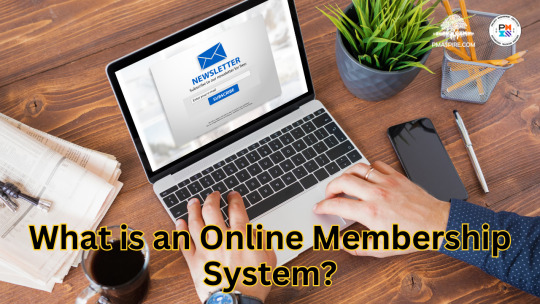
The Importance of Online Membership Systems
Online membership systems are crucial for modern organizations for several reasons. First and foremost, they simplify the process of onboarding and managing members. Rather than relying on manual paperwork, everything can be done digitally, making the whole experience smoother and more user-friendly.
Key Features of Online Membership Systems
These systems offer a range of features to facilitate effective membership management. These features include:
User Registration: Members can easily sign up online, saving time and effort.
Member Profiles: Users can update their information, track their activities, and manage their subscriptions.
Payment Processing: Collecting membership fees or subscription payments is streamlined and secure.
Content Access Control: Control who can access specific content or services.
Communication Tools: Send newsletters, updates, and notifications to members.
Benefits for Organizations
Implementing an online membership system can be a game-changer for organizations. Some key benefits include:
Improved Efficiency
Online systems reduce administrative workload significantly. Automated processes save time and resources.
Enhanced Data Management
Centralized member data is easy to access and update, ensuring accuracy and compliance.
Scalability
Online systems can handle a growing number of members without major disruptions.
Marketing Insights
Collect data on member behavior and preferences, helping tailor your offerings.
Benefits for Members
Online membership systems also offer advantages to the members themselves:
Convenience
Members can join, renew, or manage their memberships at any time, from anywhere.
Personalization
Access to tailored content or services based on member profiles and preferences.
Communication
Stay informed about updates, events, and exclusive offers.
Types of Online Membership Systems
There are various types of online membership systems to choose from, including:
Traditional Membership: Basic membership management with essential features.
Subscription-Based: Ideal for recurring services or content access.
Tiered Membership: Offers different levels of access or perks based on membership tier.
Association Management: Tailored for non-profit and professional associations.
Setting up an Online Membership System
To set up an online membership system, you need to follow these steps:
Choose the Right Platform
Select a platform that aligns with your organization's needs and goals.
Customization and Branding
Personalize your system to reflect your brand and values.
Managing Member Data
Carefully manage member data, ensuring accuracy and privacy.
Security and Privacy
Implement robust security measures to protect member information.
Pricing Models
Determine your pricing structure, whether it's monthly, annually, or otherwise.
Marketing and Growth Strategies
To attract and retain members, employ marketing strategies such as email campaigns, social media promotions, and referral programs.
Success Stories
Share success stories of organizations that have benefited from online membership systems. Real-life examples can inspire others to make the switch.
Conclusion
In conclusion, online membership systems are a powerful tool for modern organizations and communities. They enhance efficiency, member engagement, and data management. By choosing the right system, customizing it to your brand, and implementing sound marketing strategies, you can create a thriving online community. If you haven't already, it's time to consider implementing an online membership system for your organization.
0 notes
Text
The PMP® Exam Experience Right Now
In recent times, the Project Management Professional (PMP®) exam experience has undergone significant changes. With the evolving landscape of project management and the need for professionals to adapt to new trends, it's essential to stay updated on what to expect when taking the PMP® exam today. In this article, we will guide you through the current PMP® exam experience, offering valuable insights and tips to help you succeed.
The Evolution of the PMP® Exam
The PMP® exam has evolved to align with the changing demands of the project management industry. This evolution is primarily driven by the Project Management Institute (PMI) to ensure that PMP® certified professionals are well-prepared to meet the challenges of modern project management.
1. New Exam Content Outline
One of the most significant changes is the introduction of a new exam content outline. The PMP® exam now focuses on three domains: People, Process, and Business Environment. These domains encompass various knowledge areas that project managers must master.
2. The Agile Perspective
In response to the increasing adoption of Agile methodologies, the PMP® exam now includes questions related to Agile practices. This reflects the industry's shift towards Agile project management as a valuable approach to deliver successful projects.
Preparing for the PMP® Exam
Success in the PMP® exam requires thorough preparation. Here are some key steps to ensure you are ready for the challenge:
3. Understand the Exam Format
The PMP® exam format has also changed. It is now a computer-based test, administered through Pearson VUE test centers or online proctored exams. Familiarize yourself with the exam interface and practice using sample questions.
4. Comprehensive Study Materials
Invest in high-quality study materials, such as official PMI resources and reputable PMP® exam prep courses. These materials cover the new exam content outline and help you gain a deep understanding of the required knowledge.
5. Create a Study Plan
Develop a structured study plan that includes a timeline for covering all the domains and knowledge areas. Allocate dedicated study time each day to ensure consistent progress.
Taking the PMP® Exam
When the day of the exam arrives, it's essential to be well-prepared both mentally and logistically.
6. Arrive Early
If you are taking the exam at a physical test center, arrive early to ensure you have ample time for check-in procedures.
7. Relaxation Techniques
Combat exam anxiety with relaxation techniques such as deep breathing and visualization. Stay calm and focused throughout the exam.
During the Exam
During the PMP® exam, keep these strategies in mind to maximize your performance:
8. Time Management
Manage your time wisely. Allocate a specific amount of time to each question, and if you're unsure, mark questions for review and come back to them later.
9. Read Carefully
Read each question and answer option carefully. The PMP® exam may present scenarios that require careful consideration.
After the Exam
Once you've completed the PMP® exam, there are essential steps to take post-examination.
10. Review Your Results
Review your exam results to identify areas where you performed well and areas that may need improvement.
11. Continuing Education
As part of maintaining your PMP® certification, you'll need to earn Professional Development Units (PDUs) through ongoing education and professional development activities.
Conclusion
The PMP® exam experience has evolved to encompass the changing landscape of project management. By understanding the new exam format, preparing thoroughly, and adopting effective exam-taking strategies, you can navigate this journey successfully.
0 notes
Text
PMP® Exam Practice: Your Roadmap to Success
In the world of project management, the PMP (Project Management Professional) certification is a valuable asset. It's a certification that can open doors to new career opportunities and validate your expertise in managing projects effectively.
However, passing the PMP exam is no small feat. To succeed, you need to invest time and effort into rigorous preparation and practice. In this article, we'll guide you through the essential steps of PMP exam practice and provide valuable insights to help you excel.
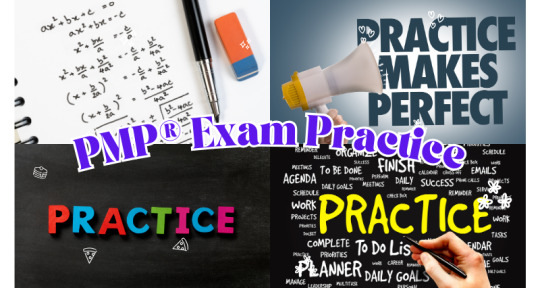
Understanding the PMP® Exam
The PMP exam, administered by the Project Management Institute (PMI), is a rigorous test of your project management knowledge and skills. It consists of 180 multiple-choice questions that cover various aspects of project management, based on the PMBOK (Project Management Body of Knowledge) guide. The exam assesses your ability to apply project management concepts in real-world scenarios.
Benefits of PMP® Certification
Earning your PMP certification can significantly boost your career. It demonstrates your commitment to the profession and your ability to lead projects successfully. Many organizations prefer or require their project managers to hold a PMP certification, making it a valuable credential in the competitive job market.
Creating a Study Plan
To succeed in the PMP exam, you need a well-structured study plan. Start by assessing your current knowledge and identifying your strengths and weaknesses. Set clear goals and milestones to track your progress throughout your preparation journey.
PMP® Exam Study Resources
There are various study resources available to help you prepare for the PMP exam. These include official PMI materials, online courses, textbooks, and study guides. Choose resources that align with your learning style and preferences.
Mock Exams and Practice Tests
Practice makes perfect. Take advantage of mock exams and practice tests to familiarize yourself with the exam format and types of questions. This will help you build confidence and reduce anxiety on exam day.
Time Management Tips
Time management is crucial during the PMP exam. Allocate a specific amount of time to each question and stick to it. If you encounter a challenging question, mark it for review and move on. Manage your time wisely to ensure you complete all questions.
Mastering PMBOK Guide
The PMBOK guide is the foundation of the PMP exam. Study it thoroughly and understand the key concepts, processes, and knowledge areas. Use it as a reference throughout your preparation.
PMP® Exam Question Types
The PMP exam includes different question types, such as situational, formula-based, and scenario-based questions. Familiarize yourself with each type and practice solving them effectively.
Critical Exam Day Strategies
On the day of the exam, arrive early, and bring all necessary documents. Stay calm and focused during the test. Start with questions you are confident about and come back to challenging ones later. Manage your time wisely to ensure you complete the entire exam.
Staying Calm under Pressure
Exam anxiety is common, but it can be managed. Practice relaxation techniques and deep breathing to stay calm under pressure. Remember that you've prepared extensively, and you are capable of passing the exam.
Analyzing Practice Test Results
Regularly review your practice test results. Identify areas where you need improvement and adjust your study plan accordingly. Focus on strengthening your weaknesses.
Continuous Improvement
PMP exam practice is an ongoing process. Keep refining your knowledge and skills by staying updated with the latest industry trends and best practices in project management.
Seek Professional Guidance
Consider enrolling in a PMP exam preparation course or hiring a mentor. Professional guidance can provide valuable insights and keep you on the right track.
The Power of Peer Groups
Joining a study group or online forums with fellow PMP aspirants can be motivating and helpful. You can share experiences, tips, and resources with peers.
Conclusion
Passing the PMP exam is a significant achievement that can propel your career to new heights. With dedicated PMP exam practice, a solid study plan, and the right resources, you can confidently tackle the exam and emerge victorious.
0 notes
Text
PMP® vs PMI ACP®: Which Project Management Certification is Right for You?
In the fast-paced world of project management, having the right certification can make all the difference in your career. Two popular choices among professionals are the Project Management Professional (PMP) and the Agile Certified Practitioner (PMI-ACP) certifications. Both offer unique advantages, but they cater to different project management approaches. In this article, we'll explore the differences between PMP and PMI-ACP certifications to help you make an informed decision.
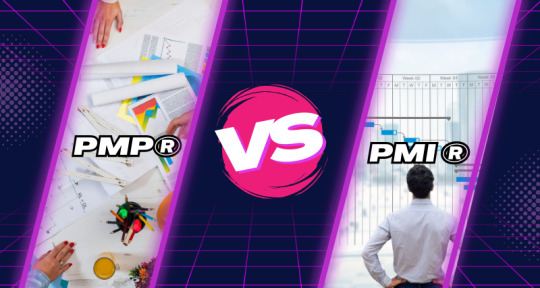
Understanding PMP® Certification
What is PMP Certification?
The PMP certification, offered by the Project Management Institute (PMI), is a globally recognized credential designed for professionals who manage projects using traditional, waterfall methodologies. It focuses on the five process groups: Initiating, Planning, Executing, Monitoring and Controlling, and Closing.
Eligibility and Requirements
To qualify for the PMP exam, you need:
A four-year degree and at least three years of project management experience.
A secondary degree (high school diploma, associate's degree) and at least five years of project management experience.
35 hours of project management education.
Exam Format
The PMP exam consists of 200 multiple-choice questions, covering a wide range of project management topics. You have four hours to complete the exam.
PMI-ACP Certification: Embracing Agile Principles
What is PMI-ACP® Certification?
The PMI-ACP certification, also offered by PMI, is geared towards professionals who work in Agile environments. It encompasses various Agile methodologies such as Scrum, Kanban, Lean, and more. This certification reflects the growing trend of Agile project management.
Eligibility and Requirements
To be eligible for the PMI-ACP exam, you need:
A secondary degree (high school diploma, associate's degree) or higher.
At least 2,000 hours of general project management experience.
A minimum of 1,500 hours working on Agile project teams, or with Agile methodologies.
21 hours of Agile education.
Exam Format
The PMI-ACP exam consists of 120 multiple-choice questions and is completed within three hours. It covers Agile principles, practices, tools, and techniques.
PMP® vs PMI-ACP®: Key Differences
Methodologies
PMP focuses on traditional project management methodologies.
PMI-ACP embraces Agile methodologies.
Eligibility
PMP requires more project management experience but does not mandate Agile experience.
PMI-ACP necessitates Agile experience but has lower overall project management experience requirements.
Exam Content
PMP covers a broad range of project management topics.
PMI-ACP dives deep into Agile methodologies and practices.
Industry Recognition
PMP is widely recognized in various industries and is often a requirement for senior project management roles.
PMI-ACP is gaining recognition, especially in the IT and software development sectors.
Which Certification is Right for You?
The choice between PMP and PMI-ACP depends on your career goals and the nature of projects you manage. Consider the following:
If you work in industries like construction, healthcare, or manufacturing, where traditional project management is prevalent, PMP may be the better choice.
If you are involved in software development, IT, or other sectors where Agile methodologies are the norm, PMI-ACP could be more beneficial.
Ultimately, both certifications can enhance your project management skills and open up new career opportunities.
Conclusion
In the world of project management, having the right certification can significantly boost your career prospects. PMP and PMI-ACP are two valuable options, each catering to different project management methodologies. Assess your experience, career goals, and industry trends to make an informed decision about which certification aligns best with your aspirations.
0 notes
Text
11 Best Membership Management System in 2023
In the digital age, where organizations of all sizes are constantly seeking efficient ways to manage their memberships, having the right Membership Management System (MMS) can make all the difference. Whether you run a non-profit, a sports club, or an online community, the choice of an MMS can significantly impact how you engage with your members, streamline operations, and enhance the overall experience. In this comprehensive guide, we present the 11 best Membership Management Systems in 2023 to help you make an informed decision and stay ahead in your endeavors.
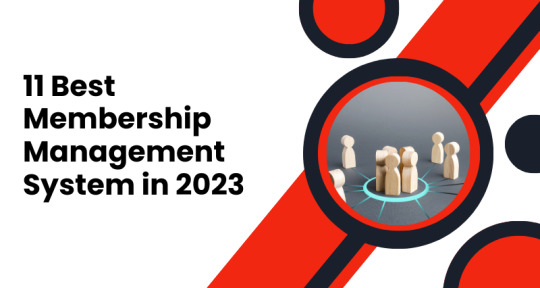
1. WildApricot
WildApricot is a versatile and user-friendly MMS that caters to a wide range of organizations, from associations to small businesses. With its intuitive interface, event management capabilities, and online payment processing, it stands as a top choice for those seeking a well-rounded solution.
2. MemberClicks
MemberClicks is a robust MMS that excels in serving associations and chambers of commerce. It offers features like event registration, email marketing, and a member directory. Its customization options make it a favored choice among organizations looking for tailor-made solutions.
3. TidyHQ
TidyHQ is a powerful MMS designed to simplify the administrative tasks of clubs, societies, and non-profits. It offers membership tracking, event management, and financial reporting, all in one place. Its user-friendly interface ensures ease of use for all members.
4. MemberSuite
MemberSuite is an enterprise-grade MMS ideal for large associations and professional societies. It provides robust data management, e-commerce capabilities, and integrates seamlessly with other systems, making it an efficient choice for complex organizations.
5. ZenberShip
ZenberShip is a cloud-based MMS designed to meet the needs of small and medium-sized businesses. It offers membership tracking, event management, and communication tools at an affordable price point. Its scalability ensures it can grow with your organization.
6. YourMembership
YourMembership offers a comprehensive suite of tools for associations, non-profits, and chambers of commerce. From member management to event registration and email marketing, it's a one-stop solution for organizations seeking efficiency and growth.
7. StarChapter
StarChapter is tailored for local chapters and associations. It provides a platform for website management, event registration, and member engagement. Its user-friendly approach makes it a top choice for local organizations looking to enhance their online presence.
8. ClubExpress
ClubExpress is an all-in-one MMS catering to clubs and associations. It offers features like website building, member management, and event registration. Its integrated approach simplifies administrative tasks and fosters member engagement.
9. Novi AMS
Novi AMS specializes in serving associations using QuickBooks. It streamlines financial processes, automates membership renewals, and offers comprehensive reporting capabilities. If your organization relies on QuickBooks, Novi AMS is a smart choice.
10. Membee
Membee is a membership management and engagement platform known for its robust features. It offers membership renewals, event management, and an integrated website builder. It's suitable for associations and clubs aiming for growth and engagement.
11. Sumac
Sumac is an MMS designed for non-profits, offering tools for membership management, donor tracking, and fundraising. Its donor relationship management features set it apart, making it an excellent choice for organizations focused on fundraising efforts.
In conclusion, choosing the right Membership Management System is a crucial step in optimizing your organization's efficiency and member engagement. The 11 options listed above cater to various needs and preferences, ensuring there's a perfect fit for your organization in 2023.
0 notes
Text
Navigating the Scrum Master Certification Journey: A Comprehensive Guide
Becoming a certified Scrum Master is a pivotal step for professionals seeking to excel in agile project management.
The Scrum Master certification equips individuals with the knowledge and skills needed to facilitate agile teams and drive successful project delivery.
In this blog post, we will provide you with a comprehensive guide to the Scrum Master certification, from understanding its significance to the certification process and tips for success.
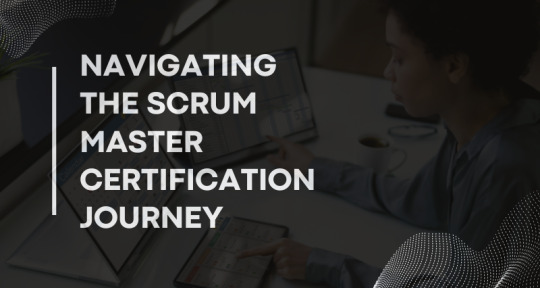
The Significance of Scrum Master Certification
The Scrum Master plays a critical role in agile development by serving as a facilitator and coach to the Scrum team.
Certification as a Scrum Master demonstrates your commitment to mastering the agile framework and your ability to guide teams toward achieving their goals.
It also enhances your career prospects in the ever-evolving field of agile project management.
Types of Scrum Master Certifications
Several organizations offer Scrum Master certifications, but the most recognized and widely accepted certification is offered by Scrum Alliance and Scrum.org. Here are the two most prominent certifications:
Certified ScrumMaster (CSM): Offered by Scrum Alliance, the CSM certification is popular and widely recognized. It focuses on the fundamentals of Scrum and the role of the Scrum Master.
Professional Scrum Master (PSM): Offered by Scrum.org, the PSM certification program offers a series of certifications that range from foundational to advanced levels. PSM certifications are known for their rigor and depth of knowledge.
Scrum Master Certification Requirements
The requirements for Scrum Master certification may vary depending on the certifying body. Here's a general overview:
Certified ScrumMaster (CSM):
Attend a two-day CSM course from a Scrum Alliance-approved trainer.
Successfully complete the course and pass the CSM exam.
Professional Scrum Master (PSM):
No specific training course is required, although Scrum.org offers optional training materials.
Pass the PSM exam, which is available in different levels (PSM I, PSM II, and PSM III) based on your desired certification level.
Preparing for the Scrum Master Certification
Preparation is key to passing the Scrum Master certification exam. Here are some steps to help you get ready:
Understand Scrum: Familiarize yourself with the Scrum framework, its roles, ceremonies, and artifacts. Read Scrum guides and recommended books to build a solid foundation.
Attend a Training Course: If you are pursuing the CSM certification, attend a Scrum Alliance-approved training course. While not mandatory for PSM, consider enrolling in a Scrum.org course or utilizing their training materials.
Practice Tests: Take practice exams and quizzes to assess your knowledge and become familiar with the exam format. Both Scrum Alliance and Scrum.org provide sample questions and practice tests.
Join Scrum Communities: Join online forums, LinkedIn groups, or local agile communities to network with other Scrum practitioners and gain insights into real-world Scrum experiences.
Taking the Scrum Master Certification Exam
When you feel adequately prepared, it's time to take the certification exam:
Register: Sign up for the exam through the certifying body's website.
Study Resources: Review your study materials and notes to reinforce your understanding of Scrum principles and practices.
Online or In-Person: Depending on the certifying body, you may take the exam online or at a designated testing center.
Exam Format: The exam typically consists of multiple-choice questions and may have a time limit. Read each question carefully and manage your time wisely.
Review and Submit: Before submitting your exam, review your answers to ensure accuracy.
After the Exam
Upon passing the certification exam, you will receive your Scrum Master certification, which demonstrates your proficiency in Scrum principles and practices. Your certification is a valuable asset for your career and can lead to exciting opportunities in agile project management.
Continuing Your Scrum Journey
Becoming a certified Scrum Master is just the beginning of your agile journey. To stay current and advance your career, consider further certifications, such as the Certified Scrum Professional (CSP) or explore roles in agile coaching, product ownership, or scaling agile frameworks like SAFe.
Conclusion
The Scrum Master certification is a testament to your dedication to agile principles and practices. By understanding the certification process, preparing diligently, and staying engaged with the agile community, you can achieve your goal of becoming a certified Scrum Master and contribute to the success of agile teams and projects.
0 notes
Text
The Path to Success: Earning Your PMP Certificate
In today's competitive job market, professional certifications hold significant value. Among these, the Project Management Professional (PMP) certificate stands tall as a symbol of expertise in project management. This article will guide you through the intricacies of obtaining your PMP certificate, from the initial steps to the final exam, ensuring you are well-prepared for this career-enhancing journey.
Understanding the PMP Certificate
What is the PMP Certificate?
The PMP certificate is a globally recognized credential offered by the Project Management Institute (PMI). It attests to your proficiency in project management and demonstrates your ability to manage projects effectively. This certification is highly regarded across industries and can open doors to lucrative career opportunities.
Why Pursue a PMP Certificate?
Career Advancement: Earning a PMP certificate can catapult your career. It showcases your dedication to the field and can lead to higher job positions and increased earning potential.
Global Recognition: The PMP is recognized worldwide, making it a valuable asset if you have aspirations to work on an international scale.
Enhanced Skill Set: The certification process equips you with essential project management skills, enabling you to excel in your profession.
The Journey to PMP Certification
Eligibility Criteria
Before diving into the PMP certification process, you must meet certain eligibility criteria:
Educational Background: You should have a four-year degree (bachelor's or equivalent) and at least three years of project management experience, with 4,500 hours leading and directing projects.
Secondary Education: Alternatively, if you have a high school diploma or equivalent, you must possess five years of project management experience, with 7,500 hours leading and directing projects.
Application Process
Submit Application: The first step is to apply for the PMP certification exam through the PMI website. Ensure all your project management experience details are accurate.
Pay Examination Fee: Pay the required examination fee, which varies depending on your PMI membership status.
Audit Process: PMI may randomly select applications for an audit to verify the information provided.
Schedule Exam: Once your application is approved, schedule your PMP exam at a Pearson VUE test center.
PMP Exam Preparation
Preparing for the PMP exam is crucial to ensure success. Here are some valuable tips:
Study Materials: Invest in quality PMP exam prep materials, such as study guides and practice exams.
PMP Exam Content: Familiarize yourself with the PMP exam content outline, which provides a breakdown of the topics covered.
Study Plan: Create a study plan that covers all the knowledge areas and process groups outlined by PMI.
Practice Exams: Take practice exams to assess your readiness and identify areas that need improvement.
Acing the PMP Exam
The PMP Exam Format
The PMP exam consists of 200 multiple-choice questions that need to be completed within a four-hour time frame. These questions are based on the PMBOK® Guide (Project Management Body of Knowledge), which is a key reference for project managers.
Exam Day Tips
Arrive Early: Ensure you arrive at the test center well in advance to complete any necessary check-in procedures.
Read Carefully: During the exam, read each question carefully and understand what is being asked before selecting your answer.
Time Management: Manage your time wisely, as you have limited time to answer all 200 questions.
Flag Questions: If you are unsure about an answer, flag the question and come back to it later.
Conclusion
Earning your PMP certificate is a significant achievement that can greatly benefit your career. It signifies your commitment to excellence in project management and opens doors to new opportunities. So, take the first step towards success by meeting the eligibility criteria, preparing diligently, and acing the PMP exam.
Frequently Asked Questions (FAQs)
1. What is the passing score for the PMP exam?
The passing score for the PMP exam is not a fixed number. It is determined by the PMI based on a predefined formula. It is advisable to focus on understanding the exam content thoroughly rather than aiming for a specific score.
2. How long is the PMP certificate valid?
The PMP certificate is valid for three years. To maintain your certification, you must earn 60 Professional Development Units (PDUs) during this period.
3. Are there any prerequisites for PMP exam eligibility aside from the experience requirements?
No, there are no specific prerequisites aside from the project management experience requirements. However, it is recommended to complete a formal PMP training course to enhance your chances of passing the exam successfully.
In conclusion, pursuing a PMP certificate is a strategic move that can elevate your career to new heights. By following the steps outlined in this article and committing to your preparation, you can embark on a rewarding journey towards becoming a certified Project Management Professional.
0 notes
Text
Building an Effective Membership Management System
A Membership Management System (MMS) is a crucial tool for organizations, clubs, associations, and businesses that want to efficiently manage their memberships, streamline communication, and enhance member engagement.
Whether you're running a professional association, a sports club, or a non-profit organization, implementing a robust MMS can significantly improve your operations. In this article, we'll explore the key components and benefits of a Membership Management System.

What is a Membership Management System?
A Membership Management System, often referred to as an MMS, is a comprehensive software solution designed to help organizations manage their members' information, subscriptions, and interactions. It serves as a centralized platform for handling various membership-related tasks, from registration and renewal to communication and event planning.
Key Components of a Membership Management System
1. Member Database
At the core of any MMS is a member database. This database contains detailed records for each member, including their contact information, membership status, payment history, and participation in events or activities.
2. Membership Registration and Renewal
An MMS simplifies the registration and renewal process. Members can sign up online, pay dues, and receive immediate confirmation. Automated renewal reminders ensure that memberships stay current.
3. Payment Processing
Integration with payment gateways allows for secure online payments for membership fees, event registrations, and merchandise purchases. This feature is particularly essential for organizations with large memberships.
4. Communication Tools
Effective communication is crucial for member engagement. MMS provides tools for sending newsletters, emails, and event notifications to members. Personalization and segmentation capabilities allow for tailored communication.
5. Event Management
Many organizations host events, such as conferences, workshops, or social gatherings. MMS can handle event registration, ticketing, and attendee tracking, making event planning more efficient.
6. Reporting and Analytics
Access to data-driven insights is essential for decision-making. MMS offers reporting and analytics features, allowing administrators to track membership trends, financial performance, and engagement metrics.
7. Member Directory
An online member directory provides members with easy access to contact information and profiles of other members, fostering networking and collaboration.
8. Security and Privacy
Protecting members' data is a top priority. MMS should have robust security measures and compliance with data privacy regulations, such as GDPR or CCPA.
Benefits of a Membership Management System
Implementing an MMS can bring several advantages to organizations:
1. Improved Member Experience
Members enjoy a streamlined and user-friendly experience when registering, renewing, and accessing information through the MMS.
2. Time and Resource Savings
Automating tasks like membership renewal, event registration, and communication reduces administrative burdens and frees up staff time.
3. Enhanced Engagement
Effective communication and event management tools encourage member engagement and participation in organization activities.
4. Data-Driven Decision-Making
Access to data and analytics empowers organizations to make informed decisions about membership strategies, marketing efforts, and event planning.
5. Financial Efficiency
Automated payment processing ensures timely revenue collection, while accurate financial reporting simplifies budgeting and financial management.
6. Scalability
MMS solutions can adapt to the growing needs of an organization, making them suitable for both small clubs and large associations.
Conclusion
In today's digital age, an effective Membership Management System is a valuable asset for organizations seeking to grow and thrive. By centralizing member information, automating processes, and improving communication, MMS helps organizations build stronger, more engaged communities while efficiently managing their memberships. When selecting an MMS for your organization, consider your specific needs, budget, and the scalability of the system to ensure it aligns with your goals and objectives.
0 notes
Text
Mastering Project Management through Project Management Professional Simulations
In the realm of project management, maintaining a competitive edge demands more than theoretical acumen alone. Actual experience and strategic acuity are indispensable elements for the successful execution of projects.
This is precisely where the significance of Project Management Professional (PMP) simulators becomes evident. This article delves into the significance of PMP simulators, elucidates their advantages, and explores how they can elevate your project management competencies to unprecedented levels.
Comprehending PMP Simulators Unveiling the Core Project Management Professional simulators are interactive instruments meticulously crafted to replicate real-world project scenarios within a virtual realm.
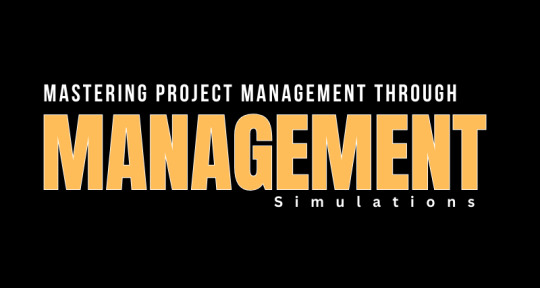
These simulations mirror various project-related challenges, decision-making crossroads, and unforeseen hurdles that project managers frequently confront.
By immersing users in lifelike situations, PMP simulators provide a secure environment to refine skills, experiment with diverse strategies, and cultivate the capacity to make informed judgments under duress.
Benefits in Brief
Augmented Decision-Making: PMP simulators provide an unmatched platform for refining decision-making aptitude. They immerse users in intricate scenarios that demand evaluation of choices, risk assessment, and selection of optimal courses of action. This hands-on familiarity translates to heightened critical thinking and more assured decision-making in tangible projects.
Proficiency in Risk Management: Effective project management rests on a foundation of adept risk management. PMP simulators empower users to navigate through a spectrum of risk scenarios and formulate strategies for mitigation. This process not only deepens their grasp of risk management principles but also equips them with pragmatic tools to confront uncertainties head-on.
Fostering Team Collaboration: The success of project management hinges on seamless teamwork. PMP simulators often incorporate collaborative features that allow users to practice coordinating teams dispersed across diverse locations and time zones. These simulations nurture communication, teamwork, and leadership skills vital for project triumph.
The Voyage of Skill Enhancement Hands-On
Familiarity Learning through practical engagement has long proven effective, and PMP simulators epitomize this approach. They provide a risk-free arena to apply theoretical insights garnered from PMP certification courses. As users navigate intricate project scenarios, they grasp the nuances of resource allocation, time management, and stakeholder engagement.
Adaptability and Ingenuity Projects seldom adhere to a linear trajectory, frequently demanding nimble adaptations to unexpected shifts. PMP simulators expose users to the capricious nature of projects, motivating innovative thinking and formulation of alternative strategies in the face of obstacles. This cultivated adaptability in simulations can wield transformative influence in real-world projects.
Harnessing the Potential of PMP Simulators
PMP Certification Preparation For aspiring project managers preparing for the PMP certification exam, simulators offer a dynamic means to test their knowledge. These tools present a comprehensive array of questions and scenarios, aiding users in evaluating their readiness and pinpointing areas necessitating further study.
Ongoing Professional Advancement Experienced project managers can also reap rewards from PMP simulators. By engaging with these platforms, they can remain attuned to the latest industry trends, refine their proficiencies, and explore novel strategies in a risk-free environment. This commitment to growth lays the groundwork for sustained success.
Frequently Asked Questions
Q1: Are PMP simulators suitable for beginners?
Absolutely. PMP simulators cater to all proficiency levels, proffering introductory scenarios for beginners and intricate challenges for seasoned professionals. The simulations guide users progressively, ensuring a smooth learning trajectory.
Q2: Can PMP simulators substitute real-life project experience?
While PMP simulators provide invaluable practical insights, they cannot supplant the depth of genuine project experiences. Instead, they complement real-world exposure, furnishing project managers with supplementary tools and competencies.
Q3: How frequently should I engage with PMP simulators?
The frequency of engagement hinges on your objectives and schedule. Consistent practice, be it weekly or monthly, yields optimal outcomes. The essence lies in maintaining equilibrium between simulated learning and actual project implementation.
Conclusion
Project Management Professional simulators have emerged as transformative assets in the realm of project management.
They bridge the chasm between theoretical understanding and practical implementation, nurturing pivotal proficiencies in decision-making, risk management, and team collaboration.
Whether you are a neophyte embarking on a project management odyssey or a seasoned professional aiming to hone your expertise, PMP simulators furnish a dynamic platform for growth.
Embrace the potential of simulations and propel your project management prowess to unprecedented zeniths.
0 notes
Text
How to Pass PMP in 30 Days?
The idea of obtaining the Project Management Professional (PMP) certification within 30 days may seem daunting, but with a structured study plan and dedication, it is possible. In this article, we will outline a comprehensive strategy to help you pass the PMP exam in a month.
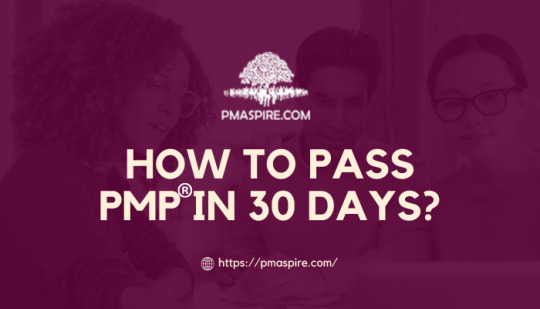
Assess Your Readiness:
Before embarking on an intense study plan, assess your current knowledge and experience in project management. Take a PMP practice exam or a sample test to identify your strengths and weaknesses. This assessment will guide your study focus.
Create a Study Schedule:
Design a daily study schedule for the next 30 days, allocating specific time slots for each knowledge area and process group. Be realistic about the time you can devote to studying while managing your work and personal commitments.
Study the PMBOK Guide:
The Project Management Body of Knowledge (PMBOK) Guide is the primary reference for the PMP exam. Divide the guide into 30 sections and cover one section each day. Take notes, make flashcards, and actively engage with the material to reinforce your understanding.
Utilize Exam Prep Resources:
In addition to the PMBOK Guide, leverage reputable PMP exam prep resources such as study guides, practice exams, and online courses. These resources offer targeted content and exam-like questions to familiarize you with the PMP exam format.
Review and Practice:
As you progress through your study schedule, allocate time for review and practice. Revisit challenging topics, take timed practice exams, and participate in mock tests to simulate the actual exam environment.
Seek Support from Study Groups:
Join online PMP study groups or forums where you can interact with other aspirants. Collaborate, share insights, and discuss difficult concepts. Peer support can be motivating and beneficial during your intensive preparation.
Maintain a Healthy Routine:
While intense studying is necessary, don't neglect your well-being. Get sufficient rest, eat healthy meals, and engage in physical activities to keep your mind and body in optimal condition for learning.
Conclusion:
Passing the PMP exam in 30 days requires dedication, discipline, and a well-structured study plan. By following the steps outlined in this article, you can enhance your chances of success and achieve your goal of becoming a certified Project Management Professional.
0 notes
Text
Is a PMP Certification Worth It?

In today's competitive job market, professionals often find themselves seeking ways to boost their careers and stand out among their peers. One way to achieve this is by obtaining certifications that demonstrate expertise and proficiency in specific fields. Among these certifications, the Project Management Professional (PMP) certification is highly regarded and recognized worldwide.
What is PMP Certification?
The PMP certification is a credential offered by the Project Management Institute (PMI) to individuals who meet specific criteria, including experience in project management and passing the PMP exam. It signifies that the holder possesses the knowledge and skills required to lead and manage projects effectively. The certification is not limited to any particular industry and is applicable across various sectors.
The Value of PMP Certification
1. Career Advancement Opportunities
Earning a PMP certification can significantly enhance your career prospects. Many organizations prefer or require project managers to hold this certification, especially for senior-level positions. Having "PMP" after your name on your resume can open doors to higher-paying jobs and leadership roles within your organization.
2. Credibility and Recognition
PMP certification is widely recognized and respected in the project management community. It demonstrates your commitment to the profession and your ability to adhere to industry best practices. Clients, employers, and colleagues are more likely to trust your skills and judgment when you have this credential.
3. Expanded Skill Set
Preparing for the PMP exam and maintaining the certification requires continuous learning and professional development. This process helps you acquire new skills and knowledge, making you a more well-rounded project manager. These skills can be applied to various projects, making you a valuable asset to any organization.
4. Networking Opportunities
Being part of the PMP community provides ample networking opportunities. You can connect with other certified professionals, attend seminars, and join forums to share experiences and gain insights. Networking can lead to potential job opportunities and collaborations, further boosting your career growth.
The Cost and Effort
It's essential to consider the costs and effort involved in obtaining a PMP certification before making a decision.
1. Financial Investment
The cost of the PMP certification includes the exam fee and study materials. While the expense may vary based on your location and study resources, it is an investment in your career. Consider it as a long-term investment that can yield significant returns in the form of better job prospects and salary increments.
2. Time Commitment
Preparing for the PMP exam requires dedication and commitment. You need to invest time in studying the PMBOK (Project Management Body of Knowledge) guide and other relevant materials. Depending on your prior experience and study habits, the preparation time may range from a few weeks to several months.
FAQs about PMP Certification
1. Are there any prerequisites for the PMP exam?
Yes, to be eligible for the PMP exam, you need to meet specific educational and professional experience requirements. As of the last update, candidates must have a secondary degree (high school diploma, associate's degree, or global equivalent) with at least five years of project management experience, including 7,500 hours leading and directing projects, along with 35 hours of project management education. Alternatively, candidates with a four-year degree (bachelor's degree or global equivalent) require at least three years of project management experience, including 4,500 hours leading and directing projects, along with the same 35 hours of project management education.
2. How long is the PMP certification valid?
The PMP certification is valid for three years. To maintain it, you need to earn 60 Professional Development Units (PDUs) during this period through various activities like attending seminars, workshops, or engaging in project management-related activities.
3. Is the PMP certification globally recognized?
Yes, the PMP certification is globally recognized and respected. It is sought after by employers and organizations worldwide and is considered a standard for project management excellence.
Conclusion
The decision to pursue a PMP certification ultimately depends on your career goals and aspirations. If you are seeking career advancement in project management or want to demonstrate your expertise to potential employers, obtaining a PMP certification can be a worthy investment. The certification offers numerous benefits, including increased job opportunities, credibility, and a broader skill set.
Remember that the process of earning the PMP certification requires dedication and effort, but the rewards can be substantial. It can significantly boost your career and open doors to exciting opportunities in the ever-growing field of project management.
0 notes
Text
What is the best software to manage projects?
Managing projects can be a daunting task. The right software can help ease the burden and make the process more efficient. But with so many project management software options available, it can be difficult to determine which one is best for your needs. In this article, we will take a look at the top project management software options available and highlight their key features and benefits.

Table of Contents
Introduction
Why use project management software?
Key features of project management software
Types of project management software
Top project management software options
Trello
Asana
Monday.com
Wrike
Basecamp
How to choose the best project management software for your needs
Conclusion
FAQs
Project management software is designed to help you manage your projects more efficiently. It can help you keep track of deadlines, assign tasks, communicate with team members, and monitor progress. With the right software, you can streamline your workflow and increase productivity.
Why use project management software?
Using project management software has numerous benefits. First and foremost, it can help you stay organized. With so many tasks to juggle, it can be easy to lose track of things. Project management software can help you keep everything in one place and easily accessible.
In addition, project management software can help you improve communication among team members. By using a centralized platform, you can easily share updates and collaborate with others in real-time. This can help eliminate misunderstandings and ensure everyone is on the same page.
Finally, project management software can help you save time. By automating certain tasks and providing you with tools to streamline your workflow, you can focus on what really matters - getting the job done.
Key features of project management software
When choosing project management software, there are several key features to look for. These include:
Task management: This feature allows you to assign tasks, set deadlines, and track progress.
Collaboration tools: This feature enables team members to work together on projects, share updates, and communicate in real-time.
File sharing: This feature allows team members to share files and documents in a centralized location.
Reporting and analytics: This feature provides insights into project performance and can help you identify areas for improvement.
Types of project management software
There are several types of project management software available. These include:
Traditional project management software: This type of software is designed for larger projects and typically includes features such as Gantt charts and critical path analysis.
Agile project management software: This type of software is designed for more flexible projects and includes features such as sprints and user stories.
Kanban software: This type of software is designed for visual project management and includes features such as cards and boards.
Top project management software options
Here are some of the top project management software options available:
Trello
Trello is a popular project management software that uses a Kanban-style approach. It allows you to create cards for tasks and move them between lists as they progress. Trello is easy to use and customizable, making it a popular choice for teams of all sizes.
Asana
Asana is a project management software that is designed for teams. It includes features such as task assignments, project timelines, and progress tracking. Asana is highly customizable and can be used for a variety of projects.
Monday.com
Monday.com is a project management software that uses a visual approach. It allows you to create boards for different projects and track progress using widgets. Monday.com is highly customizable and can be used for a variety of projects.
Wrike
Wrike is a project management software that is designed for teams. It includes features such as task management, time tracking, and collaboration tools. Wrike is highly customizable and can be used for a variety of projects.
Basecamp
Basecamp is a project management software that is designed for small to medium-sized teams. It includes features such as task management, messaging, and file sharing. Basecamp is easy to use and can help you stay organized.
How to choose the best project management software for your needs
Choosing the best project management software for your needs can be a challenge. Here are some things to consider when making your decision:
Your team's needs: Consider what features your team needs most, such as task management, collaboration tools, or reporting.
Your budget: Project management software can vary greatly in price, so consider how much you are willing to spend.
Ease of use: Look for software that is easy to use and has a user-friendly interface.
Customizability: Consider how customizable the software is and whether it can be tailored to your team's specific needs.
Integration: Look for software that can integrate with other tools you use, such as email or calendar apps.
Conclusion
Project management software can help you streamline your workflow, improve communication among team members, and save time. When choosing the best software for your needs, consider the features you need most, your budget, ease of use, customizability, and integration options.
2 notes
·
View notes
Text
Boost Efficiency and Compliance with Certification Management Software
In today's highly competitive business landscape, organizations strive to maximize their operational efficiency while ensuring compliance with industry regulations. One area that plays a crucial role in achieving these goals is certification management. Certification management software has emerged as a valuable solution for businesses seeking to streamline their certification processes, enhance efficiency, and maintain compliance with industry standards. In this article, we will explore the benefits of using certification management software and how it can help boost efficiency and compliance within organizations.
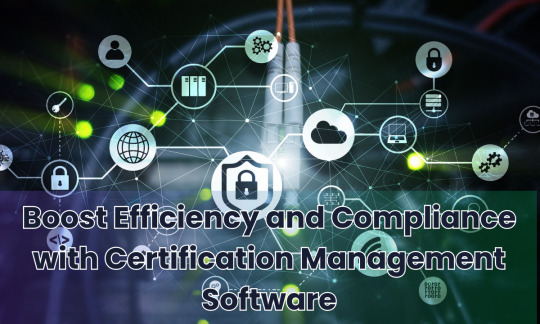
The Importance of Certification Management
Certifications are essential for businesses operating in various industries, such as healthcare, manufacturing, information technology, and finance. They serve as a validation of quality, safety, and compliance with industry standards. However, managing certifications manually can be a time-consuming and error-prone process. This is where certification management software comes into play.
Streamlining Certification Processes
Certification management software automates and centralizes the entire certification process, from application to renewal. It provides a user-friendly interface that allows organizations to easily track and manage certifications for their employees, products, or services. With automated reminders and notifications, businesses can stay on top of certification deadlines, ensuring timely renewals and avoiding any lapses in compliance.
Enhanced Efficiency and Productivity
By implementing certification management software, businesses can significantly improve their operational efficiency. The software eliminates the need for manual paperwork, reducing administrative burden and freeing up valuable time for employees. Moreover, the software's robust reporting and analytics capabilities provide real-time insights into certification status, enabling organizations to make informed decisions and allocate resources effectively.
Compliance with Industry Standards
Compliance with industry regulations is of paramount importance for businesses. Failure to meet these standards can result in penalties, legal issues, and damage to reputation. Certification management software plays a vital role in ensuring compliance by automating the tracking of certification requirements and deadlines. It helps organizations stay up to date with changing regulations, minimizing the risk of non-compliance and associated consequences.
Benefits of Certification Management Software
Centralized Certification Tracking
Certification management software provides a centralized platform for tracking and managing certifications. It allows businesses to store all certification-related information in one place, eliminating the need for multiple spreadsheets or manual records. With a few clicks, users can access comprehensive details about certifications, including expiration dates, renewal requirements, and associated documentation. This centralized approach streamlines the certification tracking process, making it easier to monitor and maintain compliance.
Automated Reminders and Notifications
One of the key advantages of certification management software is its ability to send automated reminders and notifications. Users can set up alerts for upcoming certification expirations, ensuring timely renewals and avoiding any disruptions to business operations. These reminders can be customized based on the specific needs of the organization, providing flexibility and adaptability. By proactively managing certifications, businesses can prevent lapses in compliance and stay on top of regulatory requirements.
Document Management and Version Control
Certification management software often includes robust document management features. Users can securely store and organize certification-related documents, such as training records, audit reports, and compliance documentation. The software ensures version control, allowing businesses to maintain an accurate record of all certifications and associated documents. This not only facilitates easy access to information but also simplifies audits and inspections, saving time and resources.
Reporting and Analytics
Certification management software offers advanced reporting and analytics capabilities, empowering businesses with actionable insights. Users can generate custom reports on certification status, employee training progress, and compliance metrics. These reports provide a comprehensive overview of the organization's certification landscape, enabling management to identify areas for improvement and make data-driven decisions. By leveraging analytics, businesses can optimize their certification processes, allocate resources efficiently, and enhance overall compliance.
Conclusion
Certification management software has revolutionized the way organizations handle their certification processes. By leveraging automation, centralized tracking, and advanced reporting capabilities, businesses can boost efficiency and maintain compliance with industry standards. The software streamlines certification workflows, eliminates manual paperwork, and provides timely reminders for renewals. Moreover, it enables secure document management and version control, simplifying audits and inspections.
Implementing certification management software not only saves time and resources but also mitigates the risk of non-compliance. By staying on top of certification requirements and deadlines, businesses can avoid penalties, legal issues, and damage to their reputation. The software's analytics and reporting features further enhance decision-making by providing valuable insights into certification status, employee training progress, and overall compliance metrics.
In conclusion, certification management software is a valuable tool for businesses seeking to optimize their operations, enhance productivity, and ensure compliance with industry standards. By embracing this technology, organizations can streamline their certification processes, improve efficiency, and ultimately, gain a competitive edge in their respective industries.
0 notes